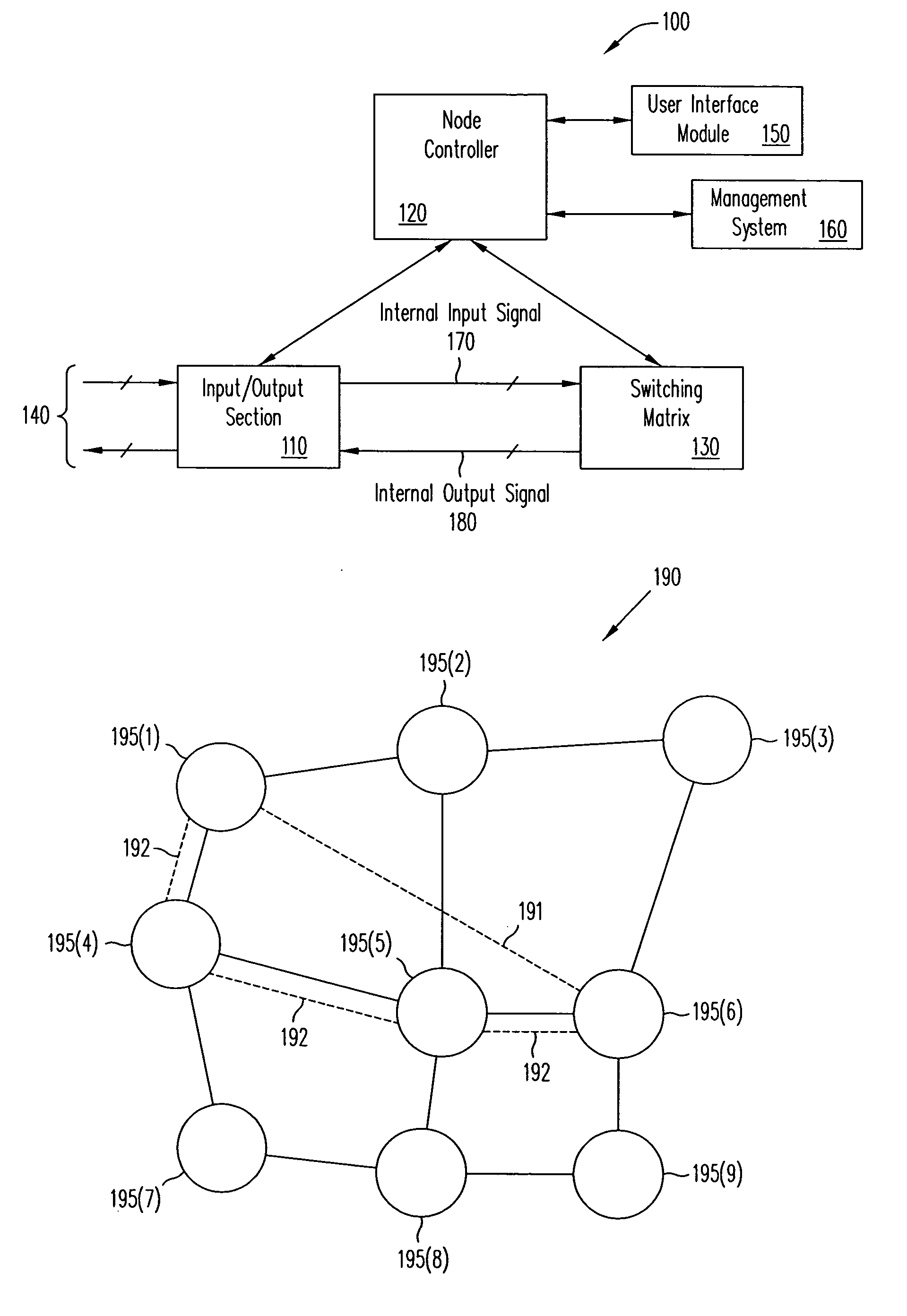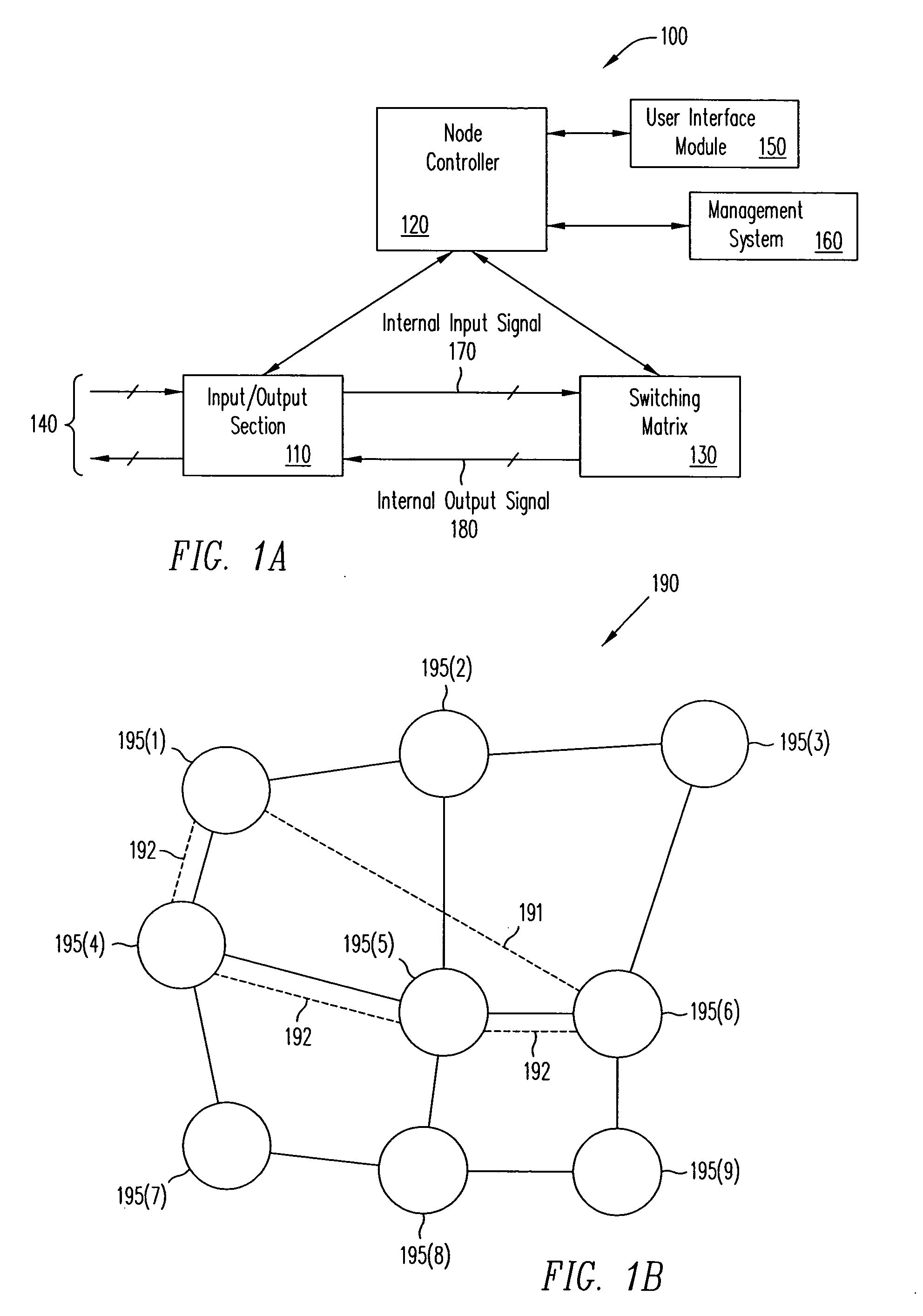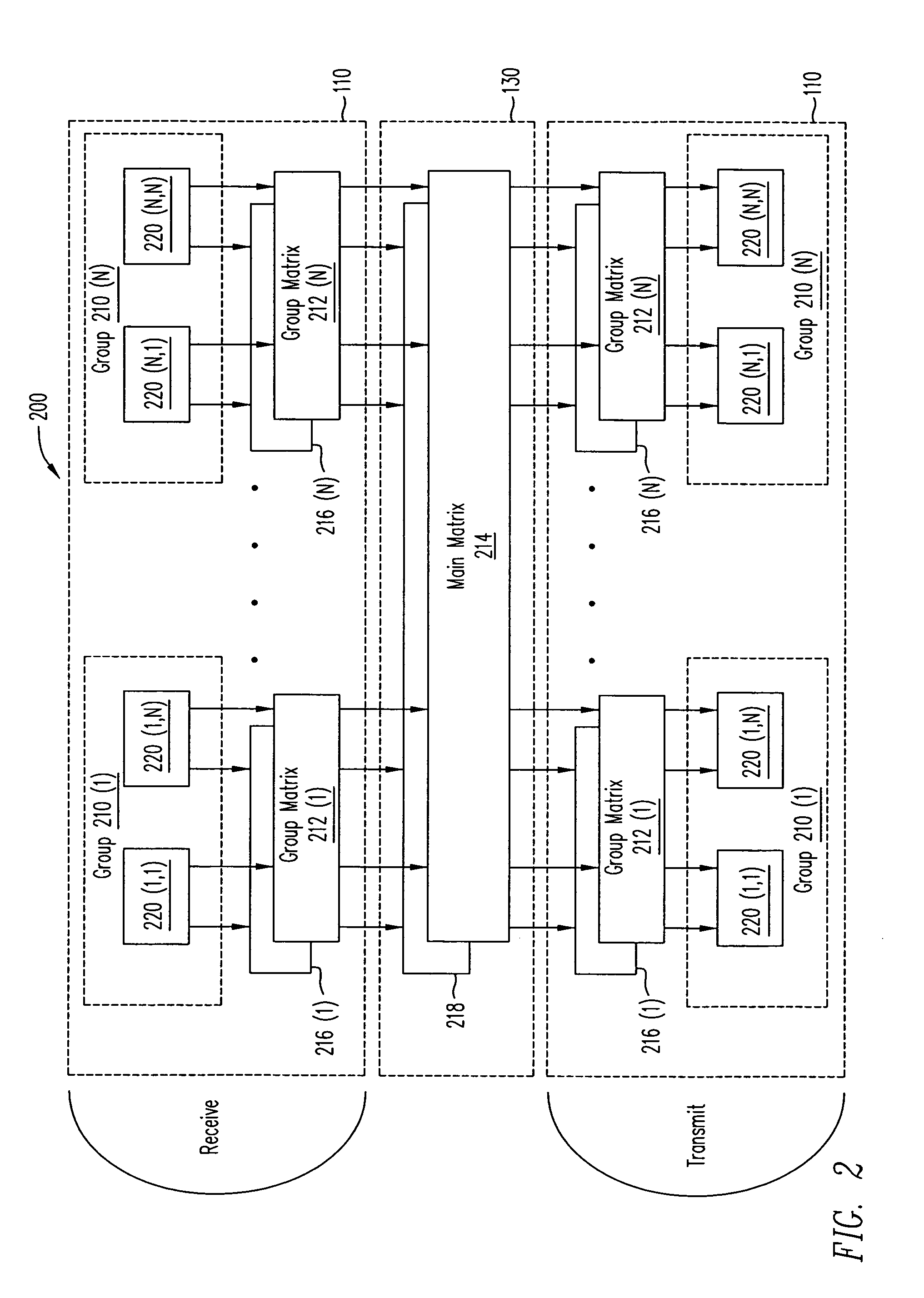Configurable network router
a network router and configuration technology, applied in the field of information networks, can solve the problems of inefficiency in capacity allocation, slow restoration time, and inability to scale well for large data networks
- Summary
- Abstract
- Description
- Claims
- Application Information
AI Technical Summary
Benefits of technology
Problems solved by technology
Method used
Image
Examples
Embodiment Construction
[0045]The following is intended to provide a detailed description of an example of the invention and should not be taken to be limiting of the invention itself. Rather, any number of variations may fall within the scope of the invention which is defined in the claims following the description.
[0046]In addition, the following detailed description has been divided into sections, subsections, and so on, in order to highlight the various subsystems of the invention described herein; however, those skilled in the art will appreciate that such sections are merely for illustrative focus, and that the invention herein disclosed typically draws its support from multiple sections. Consequently, it is to be understood that the division of the detailed description into separate sections is merely done as an aid to understanding and is in no way intended to be limiting.
[0047]FIG. 1A illustrates a router100. Router 100 includes an input / output section 110, a node controller 120, and a switching m...
PUM
 Login to View More
Login to View More Abstract
Description
Claims
Application Information
 Login to View More
Login to View More - R&D
- Intellectual Property
- Life Sciences
- Materials
- Tech Scout
- Unparalleled Data Quality
- Higher Quality Content
- 60% Fewer Hallucinations
Browse by: Latest US Patents, China's latest patents, Technical Efficacy Thesaurus, Application Domain, Technology Topic, Popular Technical Reports.
© 2025 PatSnap. All rights reserved.Legal|Privacy policy|Modern Slavery Act Transparency Statement|Sitemap|About US| Contact US: help@patsnap.com



